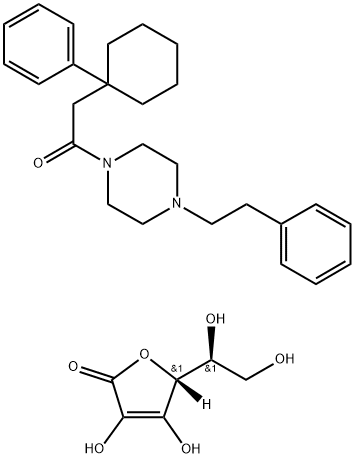D-Glutamine
Synonym(s):D -2-Aminoglutaramic acid;D -Glutamic acid 5-amide
- CAS NO.:5959-95-5
- Empirical Formula: C5H10N2O3
- Molecular Weight: 146.14
- MDL number: MFCD00065607
- EINECS: 673-968-0
- SAFETY DATA SHEET (SDS)
- Update Date: 2025-12-26 16:58:18

What is D-Glutamine?
Chemical properties
white crystalline powder
The Uses of D-Glutamine
D-Glutamine is an unnatural isomer of L-Glutamine (G597000) that is present in human plasma an is a source of liberated ammonia. D-Glutamine can be synthesized by enzymatic means or can be found in cheeses, wine and vinegars as well. It is often used to determine the activity of Glutamine synthetase, an enzyme that is commonly found in the mammalian liver and brain that controls the use of nitrogen in cells.
The Uses of D-Glutamine
D-Glutamine has been used to study its role in conferring protection against acetaldehyde-induced disruption of barrier function in Caco-2 cell monolayer.
What are the applications of Application
D-Glutamine is an unnatural isomer of glutamine
Definition
ChEBI: The D-enantiomer of glutamine.
General Description
Glutamine is a non-essential and the most abundant free amino acid present in the human body. It is an important component of proteins and is one of the 20 proteinogenic amino acids. It forms 5-6% of bound amino acids.
Biochem/physiol Actions
Glutamine forms the central metabolite in amino acid transamination via a-ketoglutarate and glutamic acid. This amino acid is metabolized by different enzymes, such as glutaminase, present in liver, and glutamine synthetase, present in skeletal muscle. It is produced in the cytoplasm from other amino acids, predominantly from branched-chain amino acids and glutamate. It plays an essential role in ammonia metabolism and detoxification. Its skeletal muscle levels are significantly reduced post trauma, operation and inflammatory states. It servers as a prognostic marker in fatal sepsis during which its skeletal muscle levels are decreased by 90%.
Properties of D-Glutamine
| Melting point: | 184-185 °C |
| Boiling point: | 265.74°C (rough estimate) |
| alpha | -32 º (589nm, c=10, N HCl) |
| Density | 1.3394 (rough estimate) |
| refractive index | -33 ° (C=5, 5mol/L HCl) |
| storage temp. | Keep in dark place,Inert atmosphere,Room temperature |
| solubility | Water (Slightly, Sonicated) |
| pka | 2.27±0.10(Predicted) |
| form | Powder |
| color | White |
| Water Solubility | 42.53g/L(temperature not stated) |
| BRN | 1723796 |
| CAS DataBase Reference | 5959-95-5(CAS DataBase Reference) |
Safety information for D-Glutamine
| Signal word | Danger |
| Pictogram(s) |
 Corrosion Corrosives GHS05 |
| GHS Hazard Statements |
H314:Skin corrosion/irritation |
| Precautionary Statement Codes |
P264:Wash hands thoroughly after handling. P264:Wash skin thouroughly after handling. P280:Wear protective gloves/protective clothing/eye protection/face protection. P363:Wash contaminated clothing before reuse. P301+P330+P331:IF SWALLOWED: Rinse mouth. Do NOT induce vomiting. P303+P361+P353:IF ON SKIN (or hair): Remove/Take off Immediately all contaminated clothing. Rinse SKIN with water/shower. P405:Store locked up. |
Computed Descriptors for D-Glutamine
| InChIKey | ZDXPYRJPNDTMRX-GSVOUGTGSA-N |
D-Glutamine manufacturer
JSK Chemicals
New Products
4,4-Difluoropiperidine hydrochloride tert-butyl 9-methoxy-3-azaspiro[5.5]undecane-3-carboxylate Indole Methyl Resin N-Isopropylurea N,N-Dicyclohexylcarbodiimide(DCC) MELDRUMS ACID 5-METHYLISOXAZOLE-4-CARBOXYLIC ACID Magnessium Bis glycinate Zinc ascorbate 1-bromo-2-butyne 2-acetamidophenol 9(10H)-anthracenone Erythrosin B, 4-Piperidinopiperidine 2-((4-morpholinophenylamino) (methylthio) methylene) malononitrile 2,4-dihydroxybenzaldehyde 3-(4-morpholinophenylamino)-5-amino-1H-pyrazole-4-carbonitrile Methyl 2-methylquinoline-6-carboxylate 2,6-dichloro-4-nitropyridine 4-Bromo-2-chlorobenzonitrile 2-(benzylamino)acetic acid hydrochloride 4-(tert-Butoxycarbonylamino)but- 2-ynoic acid 3,4-dihydro-2H-benzo[b][1,4]dioxepine 1-Phenyl-1-cycloprppanecarboxylicacidRelated products of tetrahydrofuran








You may like
-
 D-Glutamine,98% 5959-95-5 99%View Details
D-Glutamine,98% 5959-95-5 99%View Details
5959-95-5 -
 D-Glutamine, ≥99% CAS 5959-95-5View Details
D-Glutamine, ≥99% CAS 5959-95-5View Details
5959-95-5 -
 D-Glutamine 97% CAS 5959-95-5View Details
D-Glutamine 97% CAS 5959-95-5View Details
5959-95-5 -
 D-Glutamine CAS 5959-95-5View Details
D-Glutamine CAS 5959-95-5View Details
5959-95-5 -
 D-Glutamine CAS 5959-95-5View Details
D-Glutamine CAS 5959-95-5View Details
5959-95-5 -
 20677-73-0 (2,2-diethoxyethyl)methylamine 98%View Details
20677-73-0 (2,2-diethoxyethyl)methylamine 98%View Details
20677-73-0 -
 3-(4-(hydroxyamino)-1-oxoisoindolin-2-yl)piperidine-2,6-dione 98%View Details
3-(4-(hydroxyamino)-1-oxoisoindolin-2-yl)piperidine-2,6-dione 98%View Details -
 57381-49-4 2-bromo-4-chlorobenzonitrile 98%View Details
57381-49-4 2-bromo-4-chlorobenzonitrile 98%View Details
57381-49-4
